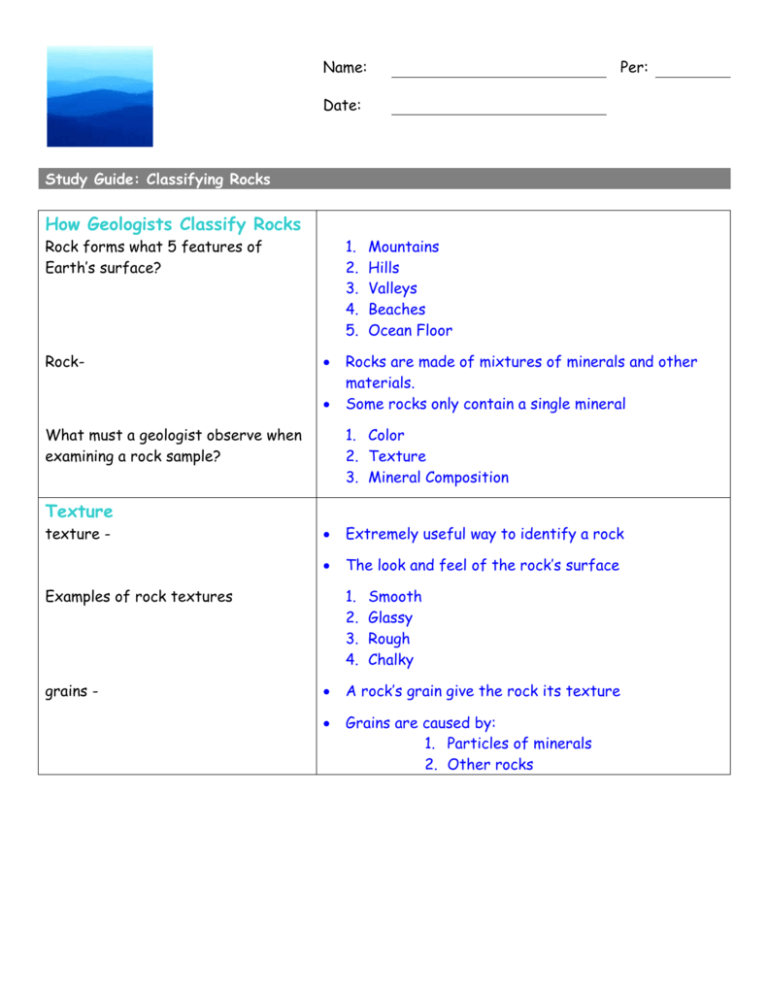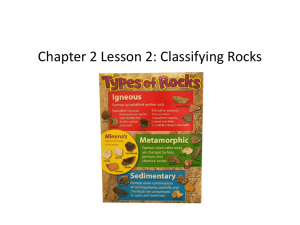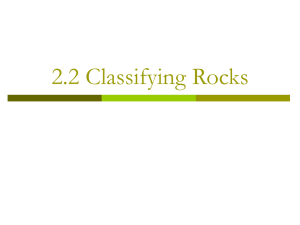Rocks Classification Notes
advertisement

Name: Per: Date: Study Guide: Classifying Rocks How Geologists Classify Rocks Rock forms what 5 features of Earth’s surface? Rock- 1. 2. 3. 4. 5. What must a geologist observe when examining a rock sample? Mountains Hills Valleys Beaches Ocean Floor Rocks are made of mixtures of minerals and other materials. Some rocks only contain a single mineral 1. Color 2. Texture 3. Mineral Composition Texture texture - Extremely useful way to identify a rock The look and feel of the rock’s surface Examples of rock textures grains - 1. 2. 3. 4. Smooth Glassy Rough Chalky A rock’s grain give the rock its texture Grains are caused by: 1. Particles of minerals 2. Other rocks 4 terms geologists use to describe a rock’s texture 1. 2. 3. 4. Grain size Grain shape Grain pattern No visible grain Grain Size Describe a rock that is coarsely grained. The grains on the rock are large The grains can easily be seen A rock that has grains that can only be seen under a microscope are said to be? Grain Shape Fine-grained The two ways that rocks get their grain shape Shapes of the crystals that form the rock o Example: Granite Fragments from other rocks o Smooth and rounded Conglomerate o Jagged Breccia Grain Pattern The grain patterns that a rock can form 1. flat layered patterns 2. Wavy – Swirling patterns 3. Rows of multi-colored beads Some rocks have grains that are random throughout the rock The rock cooled extremely quickly not allowing crystals to form o Smooth, shiny texture like a thick piece of glass Small particles of quartz has been pressed in layers on top of one another o Glassy texture No Visible Grain Why may some rocks have no grain pattern? Mineral Composition What methods do geologists use to determine? Identify the minerals the rock contains by: o Putting a small sliver of rock underneath a microscope Use tests to identify minerals such as: o Scratch test o Mohs hardness test o Acid test for carbon compounds o Magnetism test Origin The three major groups of rocks: 1. Igneous rock 2. Sedimentary rock 3. Metamorphic rock Igneous rock- Rock that forms from the cooling of molten rock – either magma below the surface or lava at the surface Sedimentary rock- Rock that forms when particles of other rocks or the remains of plants and animals are pressed and cemented together Sedimentary rock forms in layers below the surface Rock that is formed when an existing rock is changed by heat, pressure, or chemical reactions Most metamorphic rock forms deep underground Metamorphic rock-







